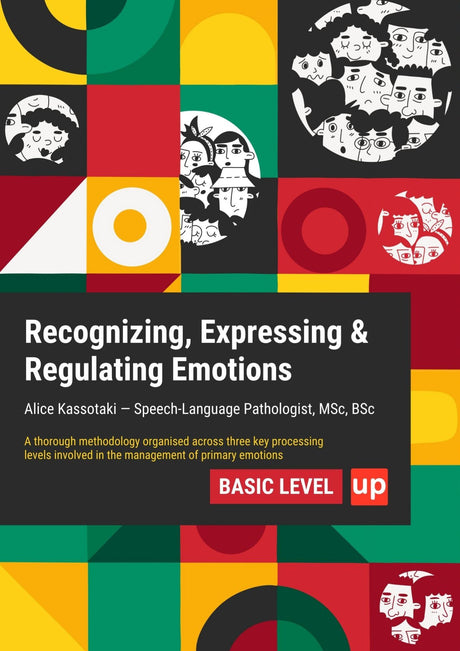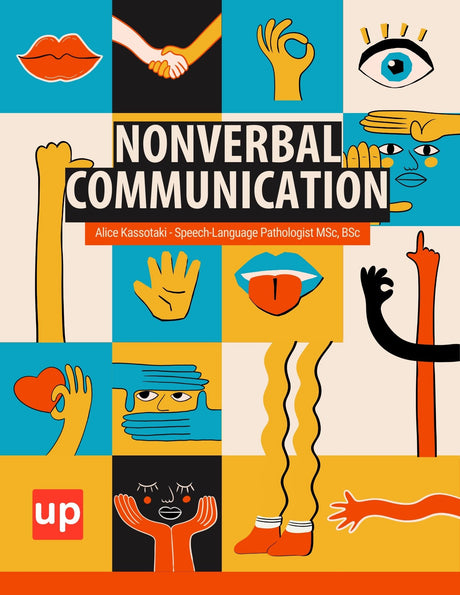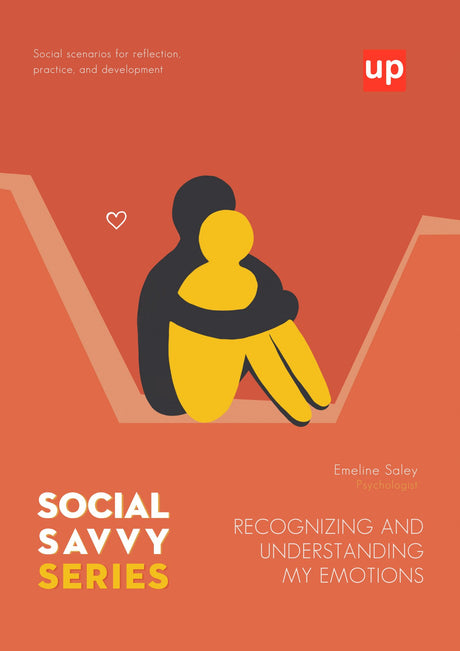Shy vs Autism: Key Differences Parents Should Know
Is your child just shy, or could it be autism? Understanding the differences between shy vs autism behaviors is crucial for the right kind of support. This article explains these distinctions and guides you in recognizing whether shyness or autism is affecting your child.
Key Takeaways
- Shyness and autism are distinct conditions; shyness is a temporary state often overcome with support, while autism is a neurodevelopmental disorder requiring specialized intervention.
- Children with shyness generally seek social engagement and can communicate effectively once comfortable, whereas children with autism may consistently avoid interactions and struggle with understanding social cues.
- Early identification of autism leads to better outcomes through tailored interventions, while shy children benefit from gradual exposure and support strategies that foster confidence in social situations.
Defining Shyness and Autism

Shyness is a common personality trait. It is marked by feelings of apprehension, self-consciousness, and a tendency to avoid social situations. Autism spectrum disorder (ASD) is classified as a neurodevelopmental disorder. It has a significant impact on social communication and behavior. Shyness and autism can sometimes be confused due to overlapping traits, but understanding their fundamental differences is essential.
While shyness is typically a temporary state that can be overcome with encouragement and support, autism requires specialized attention and intervention. Both shy children and children with autism may exhibit social withdrawal and reluctance to engage, but the underlying reasons and required support strategies differ. Recognizing these distinctions can make a significant difference in a child’s development and well-being.
Characteristics of Shy Children
Shy children often exhibit signs of social discomfort, such as reluctance to engage in conversations and physical symptoms like blushing or avoiding eye contact. These children may initially feel hesitant but can communicate effectively once they are comfortable. Monitoring a child’s shyness helps determine if it causes significant distress or interferes with daily life.
Persistent challenges in social interactions should be considered for their long-term implications on the child’s development. Shy children may prefer familiar surroundings to reduce anxiety in social situations. Environmental factors such as upbringing and family support can significantly influence a child’s level of shyness.
Severe shyness can lead to reduced self-confidence and self-esteem, impacting how a child perceives themselves and interacts with others. Therefore, parents should create a supportive environment that encourages their child’s unique strengths and helps them navigate social situations with confidence.
Symptoms of Autism Spectrum Disorder (ASD)
Autism spectrum disorder (ASD) is marked by ongoing difficulties in social communication. It also includes repetition of behaviors and sensitivities to sensory input. The symptoms of ASD can vary widely in severity and expression, making it a spectrum disorder. Common symptoms include difficulty understanding social cues, restricted interests, and repetitive behaviors.
Children with autism typically struggle with nonverbal communication and may face difficulties in understanding social cues. These challenges can significantly impact their ability to interact effectively with others and form meaningful relationships. Recognizing these symptoms early is important for distinguishing autism from other conditions like shyness.
Symptoms of ASD typically emerge in early childhood. However, these symptoms may not be obvious right away. Early identification and intervention are essential for providing the support and resources needed to help children with autism reach their full potential.
Social Interaction Differences

Shy children and children with autism can have very different social interactions. These variations can be significant. Shy children often seek social engagement but may require time to feel comfortable, while children with autism may consistently avoid such interactions. This fundamental difference affects how each group forms social connections and participates in social settings.
Grasping these differences is key to providing appropriate support. While shy children may benefit from encouragement and gradual exposure to social situations, children with autism often require more structured and autism-friendly social activities to facilitate friendships and meaningful interactions.
Shy Children’s Social Behaviors
Shy children typically experience feelings of apprehension in social situations, which can lead to increased anxiety during peer interactions. They may struggle to assert themselves and prefer observing others over actively participating until they feel secure. Despite initial hesitation, shy children can effectively express themselves once they feel at ease.
Unlike children with autism, shy children generally comprehend and respond to social cues, making it easier for them to form social connections once they overcome their initial discomfort. However, their reluctance to engage can still pose challenges in initiating and maintaining interactions, forming friendships, and participating in group activities.
Support for shy children involves recognizing these behaviors and creating a nurturing environment that encourages gradual social engagement. Parents and caregivers play a crucial role in supporting shy children develop their social skills and build confidence in their interactions.
Autistic Children’s Social Challenges
Autistic children often experience persistent difficulties in social communication, impacting their ability to engage in conversations effectively. They struggle with understanding and responding to social cues, which hinders their social interactions. This can lead to withdrawal from social situations and challenges with initiating and maintaining conversations.
Factors such as sensory sensitivities and heightened anxiety can exacerbate social challenges, making familiar environments overwhelming for autistic children. Despite these difficulties, many autistic children can and do form meaningful relationships with others, given the right support and understanding.
Correcting misconceptions about autism fosters a more inclusive environment and ensures adequate support for autistic children’s social needs. Encouraging participation in autism-friendly social activities can significantly improve their ability to form friendships and engage meaningfully with others.
Communication Variances
Effective communication is crucial for building relationships with children who are shy or have autism. Shy children may be hesitant but generally communicate effectively once they feel comfortable, while autistic children may struggle with communication due to difficulties in understanding tone, context, and nonverbal cues.
Active listening and attention to nonverbal cues are key strategies for improving communication with both groups. This approach helps in understanding their needs and responding appropriately, thereby fostering better social interactions and relationships.
Verbal and Nonverbal Communication in Shy Children
Shy children may find it challenging to initiate conversations but generally recognize social cues. They feel most at ease discussing their interests in familiar environments and express themselves effectively when they feel comfortable. Additionally, shy children often utilize body language and subtle gestures to communicate once they are at ease.
During social interactions, shy children may display physical signs of anxiety, such as blushing or increased heart rate. Recognizing these signs and providing a supportive environment can help shy children navigate social situations more confidently.
Communication Issues in Autism
Children with autism often experience challenges such as initiating conversations, understanding tone and context, and recognizing nonverbal cues. These communication struggles can lead to social misunderstandings and difficulties in meaningful engagement. Additionally, many autistic children may experience ongoing challenges like difficulty understanding social cues.
A significant concern for early development is that about 25% of children diagnosed with autism may experience regression in language skills. This regression, or the loss of previously acquired language abilities, can be an early sign of autism. Despite these challenges, autistic children can form relationships, though they may struggle with the subtleties of social communication, which can impact a child’s development.
When communicating with children who have autism, it’s helpful to use simple and clear sentences to aid understanding. Visual aids can also reinforce important concepts and assist in supporting understanding for children with autism.
Behavioral Overlaps and Distinctions
Shy children and those with autism can exhibit similar behaviors, such as social withdrawal and reluctance to engage. This overlap can sometimes make it challenging to distinguish between the two. However, while shyness generally does not significantly impact daily functioning, autism requires specialized attention and intervention.
Understanding the unique traits of autism and how they differ from shyness is crucial for providing the right support. While both groups may display social discomfort, the underlying reasons and necessary interventions differ significantly.
Shared Behaviors
Both shy and autistic children often show hesitance in participating in social activities and may display discomfort in new or crowded settings. They might struggle with making eye contact during interactions and prefer solitary play over engaging with peers. These shared behaviors can sometimes make it difficult to differentiate between shyness and autism.
Identifying these commonalities is important for understanding the child’s behavior and providing appropriate support. However, it is also essential to identify the unique traits of each condition to tailor interventions effectively.
Unique Traits of Autism
Autism may manifest through restricted interests and repetitive activities, which are less common in shy children. Children on the autism spectrum frequently engage in repetitive behaviors that are not commonly seen in shy children. These unique traits of autism highlight the need for specialized attention and intervention.
Recognizing these distinctive behaviors is crucial for providing the right support for children with autism. Recognizing the differences between shyness and autism allows for tailored interventions that address the specific needs of each child.
Importance of Early Intervention

Early identification of autism ensures individuals receive suitable support and interventions tailored to their needs. Interventions are most effective when initiated at or before preschool age, ideally around ages 2 or 3. Children with autism require more structured and continuous support compared to children who are shy.
Early intervention benefits both children with autism and shy children. Providing support and encouragement from a young age can help them develop social skills and build confidence in their interactions.
Early Diagnosis of Autism
Identifying autism as early as possible allows for timely interventions that can significantly improve long-term outcomes. Early diagnosis enables effective intervention. It is essential for helping children realize their full potential. Children diagnosed soon after showing symptoms can achieve better language and social development through early intervention.
Early intervention programs can include a variety of therapies tailored to address specific developmental needs. Children with autism may have regressive language development, which can be alarming for parents. Professionals use developmental assessments to recognize early symptoms of autism and suggest appropriate actions.
Support Strategies for Shy Children
Pressuring shy children into being more outgoing should be avoided. Parents should prioritize offering support and encouragement while respecting their children’s boundaries. Gradual exposure to new social situations should start with small, low-pressure interactions, gradually increasing the complexity and size of the groups. Positive reinforcement is an effective method to encourage shy children to engage in social situations by celebrating their small successes.
Shy children often face distress and difficulty forming social connections. Implementing various strategies can help them navigate social situations with confidence. Emotional support from parents and caregivers plays a crucial role in helping shy children develop coping strategies and build self-esteem.
Creating a safe and supportive environment at home and school is crucial for shy children. This includes offering opportunities for social interactions in comfortable settings and modeling positive social behaviors. Support services such as counseling or social skills training can also be beneficial in helping shy children develop their social skills and confidence.
Professional Evaluation and Diagnosis
Professional evaluations are necessary to accurately identify autism spectrum disorder (ASD) and distinguish it from temporary shyness. Providing appropriate interventions and supports based on a child’s unique needs is vital for children exhibiting signs of shyness or autism. Professional evaluations offer guidance and support rather than definitive labeling or diagnosis.
Accurate differentiation between shyness and autism often requires consulting healthcare professionals. These evaluations involve assessing developmental history, observing behavior, and gathering information from parents and teachers.
Early detection of autism can improve resource allocation and allow for tailored strategies to meet individual needs.
Seeking Professional Guidance
If parents are concerned about their child’s potential autism, they should speak with a healthcare professional. Consulting a healthcare provider or specialist is vital when there are signs of shyness or autism. Seeking guidance from a healthcare professional is essential if there are concerns about a child’s development.
Healthcare professionals help address concerns related to a child’s social behaviors and potential autism. They assess a child’s development, address concerns, and provide guidance to parents. Comprehensive evaluation processes provide guidance for parents. They help create supportive environments that are tailored to each child’s unique challenges.
Seeking professional guidance is crucial for understanding a child’s unique needs regarding shyness and autism. If strategies for a shy child are insufficient, parents should consider seeking professional assistance. Parents should seek professional help if their child experiences significant distress from bullying or teasing. It’s important to address these issues promptly.
Role of Healthcare Providers
Pediatricians and psychologists can conduct assessments to identify autism spectrum disorder (ASD). Pediatricians, psychologists, or developmental specialists conduct professional evaluations for children suspected of having autism. Healthcare providers help distinguish between shyness and autism by offering professional evaluation and guidance.
Every child is unique, and levels of shyness can vary, emphasizing the need for tailored support. Healthcare providers play a key role in developing individualized treatment strategies that address the specific needs of children. During consultations, healthcare providers can provide developmental assessments and resource information related to child development.
Understanding the impact of shyness and autism helps to provide the necessary support and resources for children. Healthcare providers can offer valuable insights and recommendations for interventions that foster a child’s development and well-being.
Supporting Children at Home and School

Creating an environment that encourages social interaction and comfort is essential for supporting children. Implementing strategies for encouraging social interaction is crucial in nurturing a supportive environment. Parents can help navigate social situations and build confidence in their shy children.
Children with autism can benefit from appropriate support by developing coping strategies and acquiring skills to navigate social situations. Support strategies tailored to the specific needs of both shy children and those with autism can enhance their social skills.
Educating peers about autism or shyness can help reduce stigmatization. It also increases overall understanding of these topics. Schools should implement educational programs about diversity and empathy to support children at risk of bullying.
Creating a Supportive Environment
Creating a safe environment is crucial for children with autism or shyness to reduce sensory overload and provide a retreat space. A nurturing environment is vital for development and well-being. Tailoring approaches based on individual needs and preferences is essential for supporting children with shyness and autism.
Individualized strategies are essential for effective support. With the right support, children with autism or shyness can develop strong social skills, confidence, and achieve their full potential. Parents can demonstrate positive behaviors through active listening and empathy. They should also show patience and respect for boundaries.
Implementing gradual exposure to social situations can help shy and autistic children become more comfortable. A supportive environment that respects the child’s pace and preferences enhances their social development and overall well-being.
Tailored Support in Educational Settings
Creating a safe and inclusive classroom is crucial for supporting shy and autistic children. Here are some strategies to consider:
- Provide accommodations to meet individual needs.
- Educate peers about neurodiversity to promote understanding and empathy.
- Utilize classroom presentations to raise awareness.
- Incorporate books on neurodiversity into the curriculum.
- Implement peer mentorship programs to foster an inclusive environment.
By adopting these strategies, you can create a supportive atmosphere for all students.
Support services like social skills training and occupational therapy help children develop the skills to navigate social settings successfully. Tailored interventions that address the specific needs of each child can enhance their learning experience and social interactions.
Schools should also implement educational programs about diversity and empathy to support children at risk of bullying. By creating an inclusive and supportive educational environment, schools can help shy and autistic children thrive academically and socially.
Summary
Understanding the key differences between shyness and autism is crucial for providing the right support and interventions for children. While shy children may require encouragement and gradual exposure to social situations, autistic children often need structured and continuous support to navigate social interactions effectively.
Early identification and intervention play a significant role in helping children reach their full potential. Professional evaluations and tailored support strategies can make a significant difference in a child’s development and well-being. By creating supportive environments at home and school, parents and caregivers can help shy and autistic children develop social skills, build confidence, and thrive in their interactions.
Frequently Asked Questions
What are the main differences between shyness and autism?
The primary difference lies in that shyness is a personality trait marked by social discomfort, while autism is a neurodevelopmental disorder that affects social communication and behavior. Shy individuals may desire social interaction but require time to engage, whereas those with autism often consistently avoid such interactions.
How can I support my shy child?
To effectively support your shy child, encourage gradual exposure to social situations while creating a safe environment and using positive reinforcement for their achievements. It is crucial to avoid pressure to be more outgoing, as this can hinder their progress.
What are the early signs of autism?
Early signs of autism are persistent difficulties with social communication, repetitive behaviors, challenges in understanding social cues, and sensory sensitivities, typically evident in early childhood. Early identification can significantly support intervention and development.
Why is early intervention important for children with autism?
Early intervention is important for children with autism because it provides timely support that can greatly enhance language and social development, leading to improved long-term outcomes. By addressing challenges early, children are more likely to reach their full potential.
When should I seek professional guidance for my child's behavior?
You should seek professional guidance for your child's behavior when you have concerns about their development or social interactions, as a healthcare professional can provide valuable evaluations and intervention strategies. Early assessment can make a significant difference in their growth and well-being.
References
- American Psychiatric Association. (2013). Diagnostic and Statistical Manual of Mental Disorders (5th ed.). Arlington, VA: American Psychiatric Publishing.
- Baron-Cohen, S., & Wheelwright, S. (2004). The Empathy Quotient: An Investigation of Adults with Asperger Syndrome or High Functioning Autism, and Normal Sex Differences. Journal of Autism and Developmental Disorders, 34(2), 163-175.
- Kanner, L. (1943). Autistic Disturbances of Affective Contact. Nervous Child, 2, 217-250.
- Lord, C., Risi, S., Lambrecht, L., Cook, E. H., Leventhal, B. L., DiLavore, P. C., Pickles, A., & Rutter, M. (2000). The Autism Diagnostic Observation Schedule—Generic: A Standard Measure of Social and Communication Deficits Associated with the Spectrum of Autism. Journal of Autism and Developmental Disorders, 30(3), 205-223.
- Mundy, P., & Sigman, M. (1989). The Theoretical Implications of Joint-Attention Deficits in Autism. Development and Psychopathology, 1(3), 173-183.
- National Institute of Mental Health. (2020). Autism Spectrum Disorder. Retrieved from https://www.nimh.nih.gov/health/topics/autism-spectrum-disorders-asd/index.shtml
- Wing, L., & Gould, J. (1979). Severe Impairments of Social Interaction and Associated Abnormalities in Children: Epidemiology and Classification. Journal of Autism and Developmental Disorders, 9(1), 11-29.









